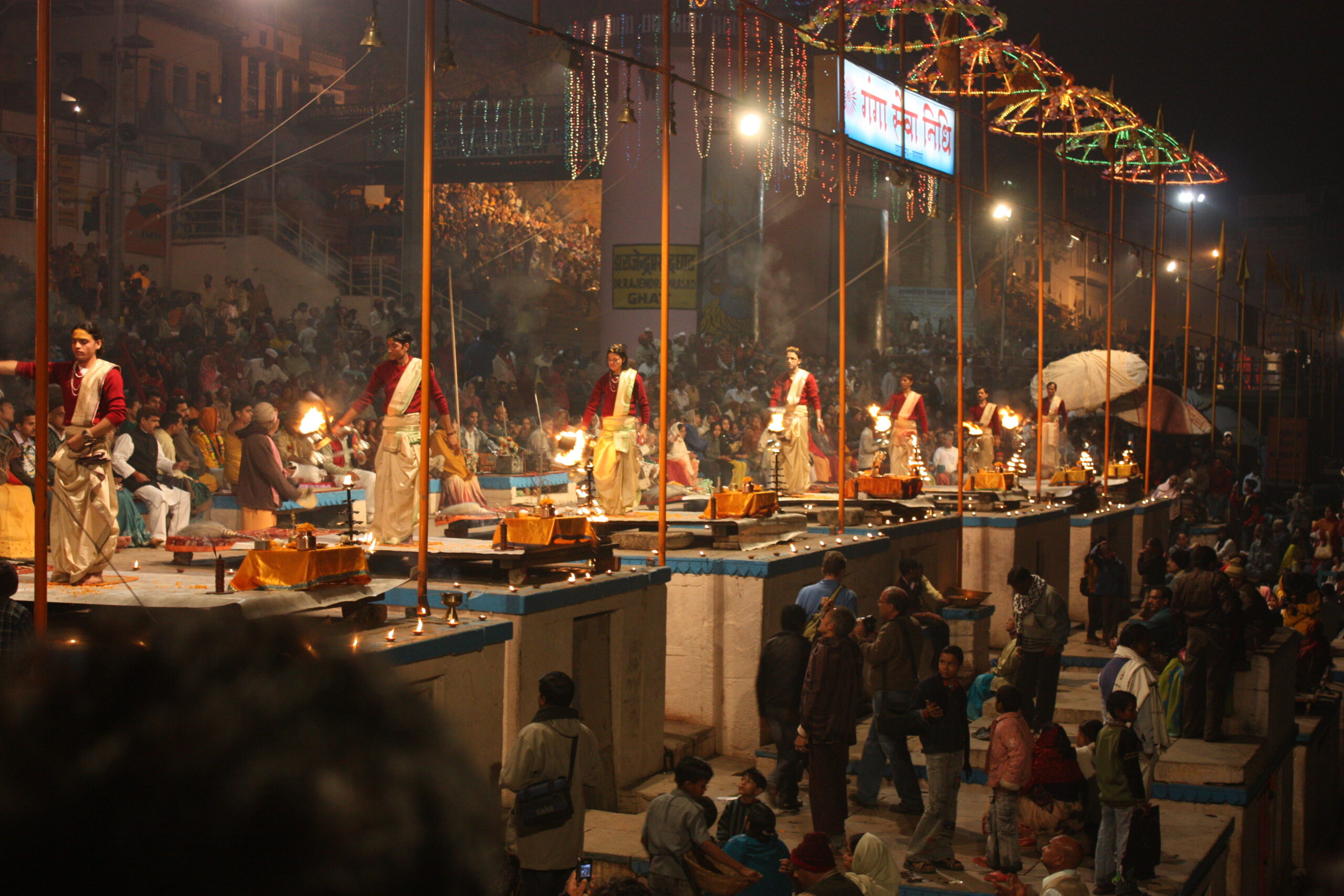|
Listen to this article now
Getting your Trinity Audio player ready...
|
India is a land where rituals meet stories, where traditions thrive, and where rivers are revered as living gods. Among its most awe-inspiring spiritual practices is the Ganga Aarti—a sacred ceremony held on the banks of the river Ganges, worshipped as a goddess. This evening ritual, marked by fire offerings, sacred chants, and deep devotion, is a captivating blend of spirituality, culture, and community.
What is Ganga Aarti?
Ganga Aarti is a devotional ritual performed daily to honor the Ganges River. Rooted in centuries-old Hindu tradition, it involves offering light in the form of lamps to the river while chanting hymns and prayers. The ceremony is seen as a way to express gratitude, seek blessings, and spiritually cleanse one’s mind and soul.
Performed at sunset, the Ganga Aarti holds a mesmerizing charm. It is as much a visual treat as it is a spiritual one. The sound of conch shells, ringing bells, Sanskrit mantras, and the sight of glowing lamps floating on the river create a powerful atmosphere that transcends the material world.
The Significance of Ganga Aarti
The Ganges is more than a river—it is a divine mother, a healer, and a liberator. Hindus believe that taking part in the Ganga Aarti helps in purifying the soul and washing away sins. It represents the victory of light over darkness, good over evil, and faith over fear.
In Hinduism, water holds sacred importance, and the Ganges is considered the most holy. The Ganga Aarti ritual reinforces the deep spiritual bond between humans and nature, reminding us to cherish and respect our natural world.

Where Can You Witness the Ganga Aarti?
While the ritual is performed at many ghats along the Ganges, the most renowned ones are:
1. Varanasi (Dashashwamedh Ghat)
The most iconic location, where hundreds of devotees and tourists gather every evening. Priests dressed in saffron robes perform a highly synchronized and grand version of the aarti. The scene is breathtaking, with thousands of lamps illuminating the night sky.
2. Haridwar (Har Ki Pauri)
This sacred ghat in Uttarakhand offers a more intimate and traditional version of the Ganga Aarti. The chants and fire rituals here attract both locals and spiritual seekers.
3. Rishikesh (Parmarth Niketan Ashram)
At this serene ashram, the Ganga Aarti is spiritual and peaceful. It’s ideal for those looking to experience the ritual in a quieter, more meditative environment.
Rituals and Symbolism of Ganga Aarti
Each element used in the ceremony has symbolic value:
- Lamps (Diyas): Represent light and the removal of darkness.
- Flowers: Offer beauty and devotion to the divine.
- Incense and Fire: Symbolize purification and spiritual awakening.
- Mantras and Chants: Create a divine ambiance and elevate consciousness.
Together, these components create a sensory experience that touches the heart and uplifts the spirit.
Why You Should Attend the Ganga Aarti
1. A Spiritual Experience
Whether you’re religious or not, the ambiance and collective energy during the ceremony instill a sense of inner peace and reflection.
2. Cultural Immersion
Witnessing the Ganga Aarti gives insight into India’s living traditions and spiritual philosophy.
3. Visual Grandeur
The sight of hundreds of flickering lamps, mirrored on the water’s surface, creates a magical scene you’ll never forget.
4. Community and Unity
Being among people of all backgrounds and faiths, sharing the same spiritual moment, fosters a deep sense of unity.
How to Prepare for Ganga Aarti
- Arrive early to secure a good spot.
- Dress respectfully, preferably in traditional or modest clothes.
- Stay silent or chant softly during the ritual.
- Carry a diya if you wish to participate actively by floating it in the river.
- Respect the environment—don’t litter or harm the river.
The Best Time to Visit
The aarti happens every evening at sunset, but visiting during festivals like Dev Deepawali, Ganga Dussehra, or Kartik Purnima enhances the experience. During these times, the ghats are beautifully decorated, and the scale of the ritual becomes even more grand.
Frequently Asked Questions (FAQs)
1. What is the purpose of Ganga Aarti?
It is a sacred ritual to express devotion and gratitude to the Ganges River and seek spiritual blessings.
2. Is Ganga Aarti performed every day?
Yes, it is performed daily at major ghats along the river, especially in Varanasi, Haridwar, and Rishikesh.
3. Can tourists attend Ganga Aarti?
Absolutely. Tourists are welcome to observe or participate respectfully.
4. Do I need to book tickets to attend?
No tickets are required for general viewing, though VIP seats may be available for a fee.
5. How long does the Ganga Aarti last?
The ceremony typically lasts between 30 to 45 minutes.
Final Thoughts
The Ganga Aarti is more than a religious tradition—it is a celebration of divinity, nature, and inner peace. Whether you’re on a spiritual quest or exploring Indian culture, witnessing this ritual will leave a lasting impression on your soul. It’s a reminder that light exists even in the darkest times, and that collective faith can bring about profound beauty.



